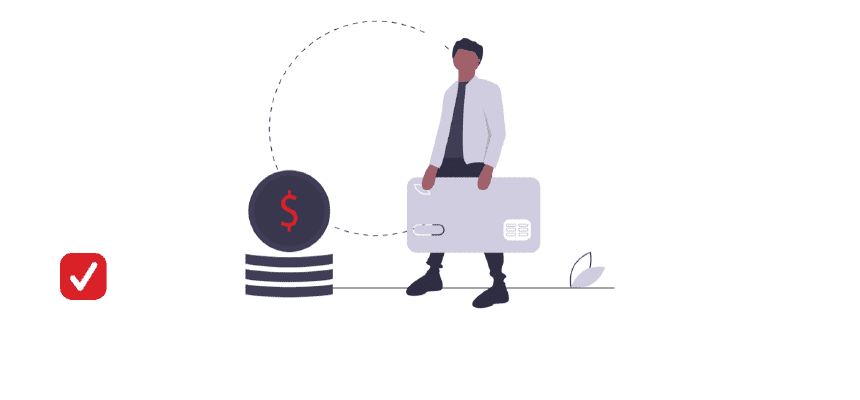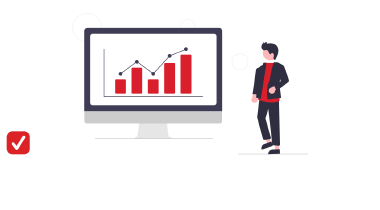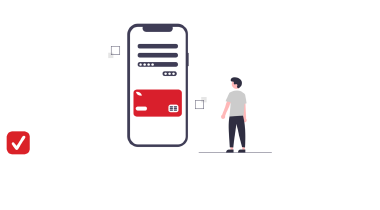A sure method to ensure that customers pay faster

It may sound strange, but as a business owner you are an important determining factor for the payment behaviour of your customers. When you have a strict debtor policy, customers pay considerably faster than when you have a ‘flexible policy’. Many business owners think that with a strict debtor policy they risk the relationship with their customers. This is not the case. Payt gives you tips on how you can quickly collect your outstanding invoices in a customer-friendly manner.
The importance of getting paid fast
The primary goal of a company is to achieve maximum profit. Products are purchased competitively and sold with maximum profit. However, this can not be achieved when your customers pay late (or not at all). Slow payments impact your ability to manage your business effectively because if you do not have enough cash coming in, you will not be able to cover your monthly expenses and pay the wages of your employees. You can see it as a domino effect. When one customer fails to pay within the payment term, it will affect your whole business. In addition, it impacts your ability to grow your business. Delayed payments hinder your growth opportunities because when there is not enough money flowing in, it is more difficult to buy equipment and hire more employees.
Slow payments can impact your business dramatically. Getting paid faster is more important than you think.
The effect of slow payments on your DSO
Your DSO (Days Sales Outstanding) is a key indicator of the financial health of your company. The DSO measures how long it takes, on average, for you to receive payment of an invoice after a service or product has been delivered to your customer. A longer DSO means less cash flow and less liquidity. Reducing your DSO is important for your liquidity. For example, if your payment terms are 30 days but, on average, you are receiving payment from your customers within 41 days, this can amount to a large deficit- which means lower working capital and higher financial costs.
The risks that slow payments have
When you have a lot of unpaid invoices you face increasing levels of risk because the longer you wait for a payment the higher the risk of default of payments. Poor liquidity can jeopardise your company’s survival. A large part of bankruptcies are caused by poor debtor management. However, the good news is that you can do something about it and significantly reduce the risk of this happening.
Tips for getting paid faster that you can put to use right away
1. Invoice digitally
Almost 50% of SME business owners are not paid on time. One of the biggest improvements you can make to improve faster payments is through digital invoicing. In a digital age, paper invoices simply make no sense. They simply cause delays; a paper invoice comes in through the postal service (which has already taken a day - and if you are unlucky - longer), it ends up in a stack to be scanned and only then is registered in the payment program. Scanning is an extra action that can be postponed for a few days - if the invoice is not already completely forgotten about. In a digital age, digital invoicing is an absolute must for business owners. It is an effective way to get paid faster.
2. Give payment discount
“If you pay within x weeks after the invoice date, you will receive x% payment discount”. Payment discounts are offered frequently and for good reason. They work! You reward the good payment behaviour of your customers and all they have to do is to pay quickly. The benefit works both ways. Because if your customers pay fast, you have less interest loss. That benefit plus the time and cost associated with sending reminders definitely outweighs any cost you incur.
3. Conduct tight debtor management
The very best way to get invoices paid quickly is simply via tight debtor management. This means that you have a clear payment term and then maintain it. If your payment term is 14 days and your customer has not yet paid after the expiry of that period, send a reminder immediately on the fifteenth day after the invoice date. Some companies only pay after a first reminder, so do not make your payment term too long. Clearly indicate in your reminder that payment is overdue. After all, the invoice may have escaped the customer’s attention.
After the first reminder, you can choose a second reminder or demand immediate payment. Most people do find a request for immediate payment a little harsh and therefore opt to send a second reminder, which is more strict in tone. Send this reminder no later than two weeks after the first reminder and order your customer to pay within five working days. If your customer does not pay after the second reminder, you can easily start a collection process. The big advantage of debtor management software is that you demonstrate that you are on top of your debt collection process and that the unpaid invoice has not escaped your attention.
4. Automate using your debtor management and collection process
If you choose to automate your debtor management, your invoices and reminders will be sent automatically. Because Payt links with almost every invoice- and accounting packages, the software seamlessly connects to your existing package.
You can also set all preferences related to your debtor management yourself. This allows you to:
- determine after how many weeks you want to send a reminder. The software checks whether the payment has been made during that period. If not, a first and, if necessary, a second reminder will be sent automatically.
- easily communicate about (outstanding) invoices via the Payt platform. The payment reminders contain a pay now link with which your customer can immediately pay the outstanding amount via, for example, Stripe or iDEAL for example.
- temporarily stop or pause the process per customer. Has the customer contacted you or is there any other situation as to why you do not want to continue sending reminders? Then you can simply pause or stop the debtor process at the touch of a button.
- record and monitor payment arrangements quickly and easily.
5. Use effective invoice templates
Are you not getting paid because your invoice is incorrect or unclear? It is important to check that because the majority of late payments happen because of administrative issues. A complete and clear invoice is necessary to get paid faster. Here we explain how to write a professional invoice letter. Also, a clear overdue invoice letter is important for the effectiveness of the payments.
6. Check your customers creditworthiness
Another way to ensure you get paid faster is to manage your customer credit risk. Assessing your customers’ creditworthiness involves checking their financial situation. This financial situation must be stable enough to ensure they can pay your invoices now and in the future. It is an important foundation on what risk you are willing to take. There are different credit risk management tools you can use to check the creditworthiness of your customers.
It is smart to assess the credit scores of new potential customers. This way you can determine in advance if you want to do business with them. You have to judge here if they have the financial means to pay you quickly. However, you should also check the creditworthiness of existing customers since circumstances can of course change. Through credit management reports you can gather information about the creditworthiness of your business debtors. When debtors decrease their credit score, you can discuss this with them and make (payment) arrangements to ensure that the invoice is still paid quickly. This can prevent serious problems when collecting invoices and ensures you get paid faster.
7. Make use of invoice financing
Are your growth plans complicated by limited financial resources? Then it can be smart to organise invoice financing.
Invoice factoring versus invoice financing
What is invoice factoring? The traditional way of invoice factoring is the outsourcing of accounts receivable to a specialised company that bears the risk of defaults and administration costs for a fee. By transferring your debtor management to this specialised factoring company, you immediately receive part of your money as compensation. This sounds attractive, but there are disadvantages. For example, only a small part of the outstanding invoices is pre-financed and you are no longer in control over the invoices and debtors. This allows choices to be made that are not in your best interest. And that can affect your company image. Invoice factoring is an expensive process. You pay a decent commission to the factoring company. Read more about the advantages and disadvantages of factoring.
With invoice financing, you retain full control of collections. The modern form of factoring means that you do not hand over your debtor administration to a third party, but rather control the process yourself. This gives you room to communicate with your own customers without affecting your liquidity. Pre-finance with invoice financing and you will receive this money in your bank account within 24 hours. Invoice financing with Payt is a friendly alternative to factoring. And an effective way to get paid fast and grow your business.
8. Communicate fast about questions
By consistently bringing invoices to the attention of your customers, you can keep the communication going which ensures better payment behaviour. Sending an invoice can be a point of contact in the customer experience. This allows you to gain better insight into the reason for slow payments and gives an opportunity to look for a solution together with your customers to ensure you get your money quickly.
Is there a problem with the invoice or is the customer unable to pay his/her invoice for a while? No problem. With consistent and clear communication, you can make sure that you will be paid as soon as possible.
The costs of late payments versus the investment in credit management software
Cash flow is king. As we discussed earlier, slow payments limit cash flow and liquidity, and cause much more expenses. The costs of late or non-payments are enormous for your business. For example, costs of recouping bad debt, interest costs, opportunity costs, debt recovery costs and so on.
Let’s say your business has a profit margin of 20%. If you’ve got an unpaid invoice of £4,000, it is going to cost you £20,000 in new revenue to make up for that £5,000 debt. And this is just one example of the costs you have when you are not paid by your customers.
But how to minimise the risk of slow or non-payment? Invest in credit management software. Credit management software ensures that you get paid faster by automating where possible and by making it personal where necessary. This can save you up to 80% of your valuable time and makes sure you get your invoices, on average, 30-50% paid faster. Payt can help you to get paid faster and easier.
The advantage of using Payt
- Regain control of your debtor management. In Payt, you can immediately see what the outstanding balance is, in which phase of the billing process a customer is and which invoice requires attention.
- Structurally and automatically remind your customers of outstanding invoices. This ensures better payment behaviour and leaves time for you to focus on things that really need attention.
- Make payment easier for your customers by offering them payments links in the invoices and reminders. This ensures faster payment and a lot of records have been set with this feature.
- Save up to 80% of your time and get 30-50% paid faster
Start improving your debtor management today!
Related articles

Invoice finance software, a new way of financing your growth

Order to Cash software (O2C)

